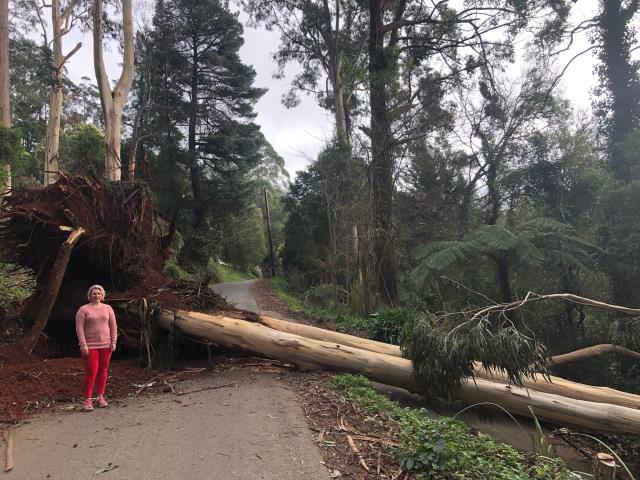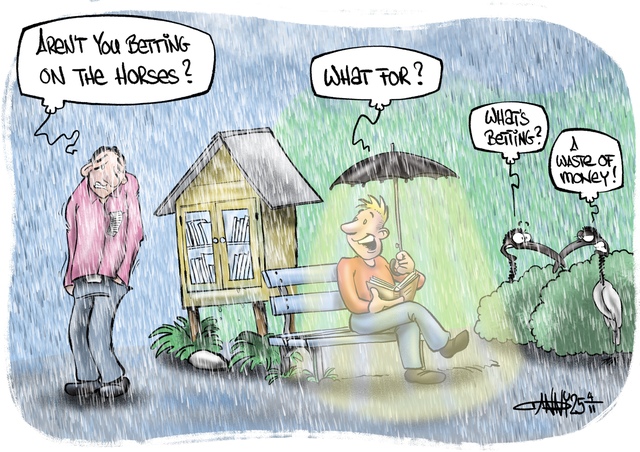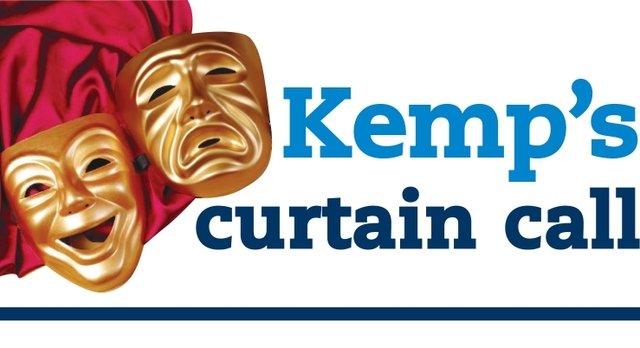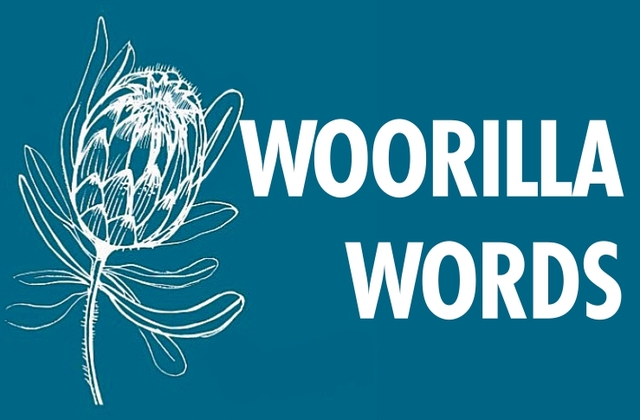Julia Hall instinctively drew on her experiences of living through cyclone season in the Northern Territory when the Dandenong storms of 2021 hit.
As soon as the sounds of the wind intensified, she immediately began dragging bed mattresses into the living room to protect her family inside the home.
“That sound, I remember thinking ‘we’re in a cyclone’. That’s what it was like. I had never really heard anything like that in Victoria. That’s the wind sound you hear in Darwin when a cyclone is around,” Julia said.
Living through not one but two storm events just a month apart from each other during 2021 was a learning curve for Julia and her family.
Having lived in the Dandenong Ranges for 12 years, Julia said she’d experienced storms before but nothing like the night of 9 June.
“We didn’t really think about it. You get a lot of storms in the hills, you get a lot of warnings, but we have never worried about a normal storm. The big danger in the hills that you always think about is fire,” she said.
“So we were very well prepared for a fire warning and for what to do. We had our fire plan to put in place if a fire was going to come through but it never crossed our mind that a storm could cause that much damage, so it wasn’t even on our radar.
“It was only after that storm on the night of the ninth of June that it made us realise, ‘Wow, we actually need to be much better prepared’ because we just were not ready.”
The strength of the wind pushed furniture around “as if it was balsa wood on the balcony”, as well as a full gas bottle and brought down 26 trees in the backyard.
Julie recalls walking out into a state of complete destruction and chaos. Power and internet had been disconnected, trees were blocking the driveway and the road and the thought of ‘what now’ sunk in.
She made her first ever call to the SES when she finally got two bars of phone reception. Julia said she learned a valuable lesson of the need to share critical information with emergency crews
“I got through to the SES and they said, ‘are you warm? And is anybody hurt?’ And I said ‘no we’re fine, we’ve got a generator, and we’ve got a fire and we’ve got gas cooking, so we’re okay’. And they said, ‘Okay, well, we need to prioritise other people that are in danger.’
“I was like ‘yep, no problem’ and so they had us on the list, but we weren’t a priority. And that was where I learned I needed to give them the whole story because had they known my husband had just had a heart attack a few months earlier and it was important for us to be able to get in and out of our driveway, we would have been prioritised.
“But instead we had two weeks of driving over powerlines because that was our only way of getting in and out of our driveway. The road was blocked for about four days. So that’s a really big risk that I was not prepared to take again.”
When it did happen again in July, Julia knew the process and was better equipped to ask for what she needed.
“I learned my lesson from the first storm not to be shy about letting them know our situation. So probably about 7.30 in the morning, I rang the SES and I let them know we’ve had a massive tree down across the driveway and we’ve lost our NBN,” she said.
“I said, ‘my husband had a heart attack in February and we really do need to be able to get in and out of our driveway’.
“Just the fact that I let them know about our situation with Wayne and his heart, by three o’clock in the afternoon that tree was cleaned up and our driveway was open. They literally never got to us in the first storm.”
Julia said had the SES prompted her with more questions in the first storm event in June, it probably would have been a different conversation.
“Had they said to me, ‘have you got anybody in your house that has a life threatening condition?’ That would have triggered for me ‘Oh, yes, I do. My husband had a heart attack in February, he has a sensitive heart and he’s still in recovery, getting used to his medication’.
“That would have totally changed the conversation but instead their questions are: Is everybody safe? Yeah. Is everybody warm? Yeah. Do you have a generator? Yeah. Then you’re fine.”
Julia said being prompted to share health concerns during an emergency call would create less stress and worry for people in similar situations.
“It’s a behavioural thing. As humans, we don’t want to put ourselves before others. So in a storm like that, my head went ‘there’s clearly going to be people worse off than us, we haven’t got a tree on our house, we’re alive and I just want my driveway cleared’.
“But Hills people, I think, we don’t want to be a bother and as a consequence, we also maybe don’t always get the help we need as quickly as we need it. For some elderly people it was like seven days before anybody got to them, sometimes longer.”
Moving forward, Julia said the opportunity to ask more questions of people who call for help, whether it be to Yarra Ranges Council, SES, CFA or other services would hopefully improve the outcomes for all.
While room to learn and grow from the storm events of 2021, Julia said she is extremely grateful to have volunteer organisations like the SES and CFA to provide support in disasters of every kind.
“I was so impressed with the SES response overall, and also their handling and management, as well as the CFA.
“We’re really lucky to have that and so whatever support they need, we should be giving it to them.”







